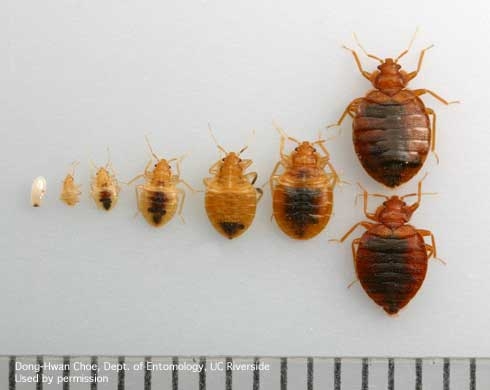
Bed bugs are quickly becoming major household nuisance pests. California has recently experienced a multitude of bed bug reports, with San Francisco now considered one of the Top 10 most infested cities in the country. Bed bug detection can be very difficult and almost always requires special training since bugs prefer to hide in dark, inaccessible cracks and crevices near their hosts’ resting spots. An experienced pest management professional can examine all possible harborages in a home, searching for the bugs themselves and signs of infestation such as the characteristic black fecal spotting and cast nymphal skins, although low-density infestations may escape detection.
Thankfully, several monitors are available that attract or intercept bed bugs. Bed bug monitors fall within one of two categories: active monitors and passive monitors. Active monitors employ attractants—heat, carbon dioxide, host odors (kairomones), pheromones, or a combination of these—to lure bed bugs out of their hiding areas and into a pitfall or sticky trap within the monitor. These devices have the potential to detect bed bugs in the absence of a host (vacant room). Passive monitors either exploit a bed bug’s affinity for dark crevices or rely on chance encounters with pitfalls or sticky traps. Interceptor monitors are pitfall devices that rely on the presence of a host (a sleeping human) to attract hungry bugs and trap them en route to their meal.
A team of UC researchers led by UC Berkeley entomologist Vernard Lewis recently evaluated a series of five bed bug monitors. Overall the study concluded that active monitors recovered a steady proportion of bed bugs as densities increased and that all monitors tested were able to detect bed bugs at low densities.
Read more in the February 2013 issue of the UC IPM Green Bulletin. More information on bed bug biology and management is available in the just revised Pest Note: Bed Bugs on the UC IPM web site.